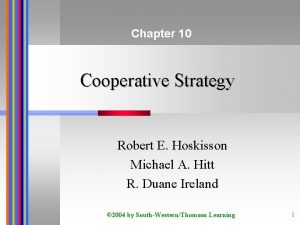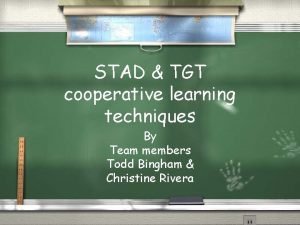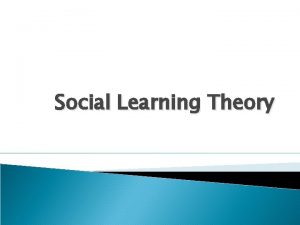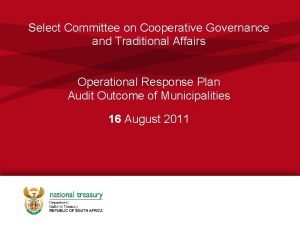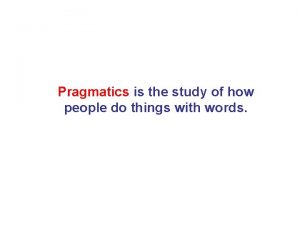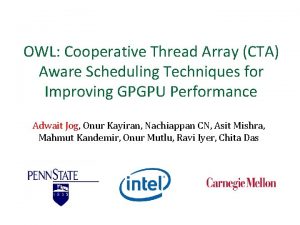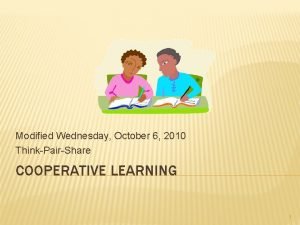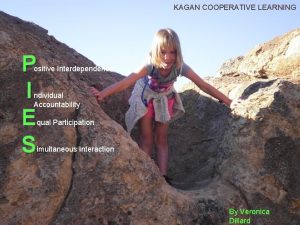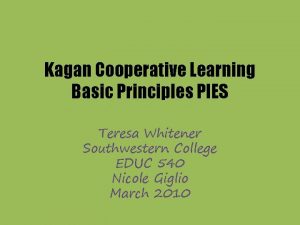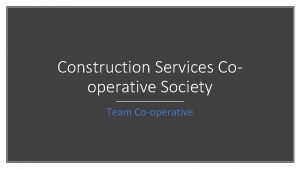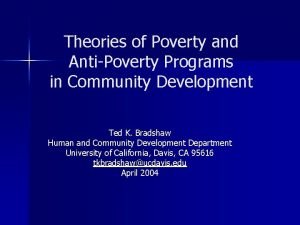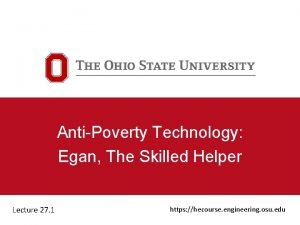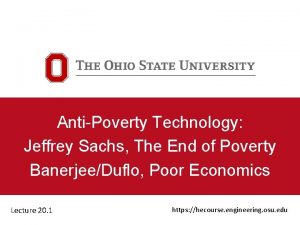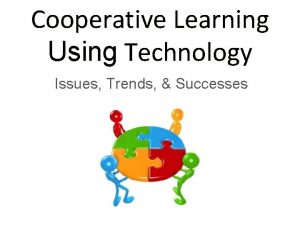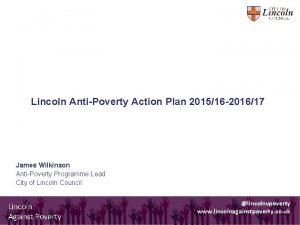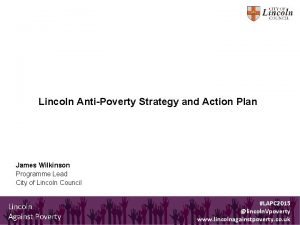AntiPoverty Technology Research Cooperative Management of Community Technology


















- Slides: 18

Anti-Poverty Technology: Research: Cooperative Management of Community Technology Lecture 40. 1 https: //hecourse. engineering. osu. edu

Cooperative Management of Community Technology, Relevant Subjects: • Example: The Water of Ayolé • Management of common-pool natural resources (e. g. , forest or lake) • “The common good” (Catholic social justice) People manage? Technology manages? A sociotechnological, socioecotechnological dynamical system 2

Community technology examples: • Water pump • Some energy source (e. g. , biodigester) • Sanitation service (e. g. , toilets) • Cell phone charging station (multiple outlets) Any technology that is shared 3

Community technology management: 1. Operation: Services or goods provided properly (e. g. , in adequate quantity and quality), and equitably among users. Selfoperation vs. assisted 2. Maintenance: Especially under heavy use and aging, break downs. Requires repairs or replacement, costs money 4

Example: • 5 people • 3 technology “resources” 5

Technology resources, j, j=1, . . . , M Users, i, i=1, . . . , N Amount of good/service from j by i, rij(k) Simultaneous use? Continuous/discrete? Sequencing of use, amounts per resource? Prices, pij(k), user pays pij(k)rij(k) 6

Collect money to pay for operation and maintenance: • Paid attendant? Paid repairperson? • What is the “mean time between failures” (MTBF) for a technology? Dictates collection amount • May collect more from one technology resource to pay for management of others 7

Management of Community Technology by People: • Attendants: Paid ($ or use), time range? Lock-down possible? Secure technology against abuse/theft? • Prices set by community (committee? ), use MTBFs? • Store money in bank of some sort • Ensure fair use, report technology failures • Boring, but useful jobs? 8

Problems: 1. Reliability: Will people always be there? 2. Corruption? Take $? Give free use? 3. Pricing sophistication too high? Dynamic based on repairs, use patterns, MTBF 4. Result in management failures ⇒ service down-times? 9

Automated/Semi-Automated Management of Community Technology: • Electromechanical $ collection devices at each j • Display price, gather money • Data tracking: Payments, use levels/patterns, monitoring from a distance (to study effectiveness) • A network? • Automation costs, up-front/on-going 10 Study of automation could be useful (pricing)

Semi-Automated: People+Technology • People attend, collect money, get paid • Prices set by the computer (to cope with complex pricing issues) • If person not there (e. g. at night), go to full -automated • Could cope with inequality, via pricing strategies (e. g. , with community input) 11

Feedback Control for Community Technology Management: Example • M=1 technology resource, N=3 people • Notation: ri(k), pi(k) • ri(k) are constants of 5, 7, and 8 with uniformly distributed noise added on from [-2, 2] • cm(k), maintenance costs at k • m(k), stored maintenance money 12

Past amount, minus expenditures, plus total gathered (modified) Amount paid to attendant 13

Desired stored maintenance money, md(k) Set as ramp/constant Let cm(200)=50 Pricing signal Nonlinear proportional feedback control Tries to adjust prices to make m(k) the same as md(k) (copes with random failures) 14

Allocate Pricing Choice of gi • Equality, gi=1/N • Inequality: Community picks the gi 15

Equality gi=1/3, i=1, 2, 3 16

Inequality g 1=0. 5, g 2=0. 3, g 3=0. 2 17

Research Directions: • Model validation—what needs to be validated? Variables, parameters, dynamics, … • Technology development: Case-specific. Learn community/context, propose solution (including social part), participatory development at each step. 18
 Cooperative technology conference
Cooperative technology conference Cooperative strategy in strategic management
Cooperative strategy in strategic management Treacability
Treacability Plan together in community mobilization
Plan together in community mobilization Ohio valley educational cooperative
Ohio valley educational cooperative Cooperative model example
Cooperative model example Cooperative vs collaborative learning
Cooperative vs collaborative learning Tgt cooperative learning
Tgt cooperative learning Social definition
Social definition Cooperative governance
Cooperative governance Cooperative learning ideatore
Cooperative learning ideatore The quality maxim
The quality maxim Cooperative thread array
Cooperative thread array Think pair share cooperative learning
Think pair share cooperative learning Meaning of industrial estate
Meaning of industrial estate Kagan pies
Kagan pies Pies principles
Pies principles Cooperative pe games
Cooperative pe games Conventional implicature
Conventional implicature

